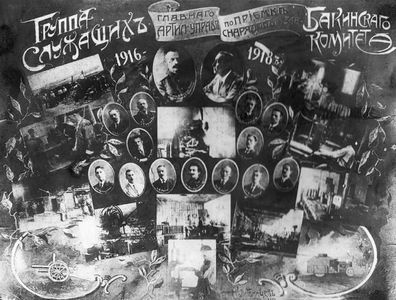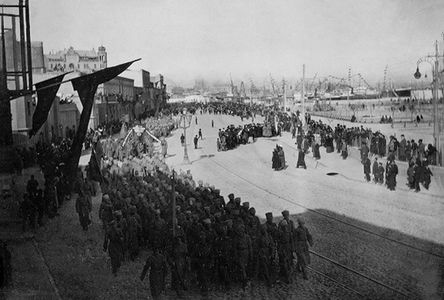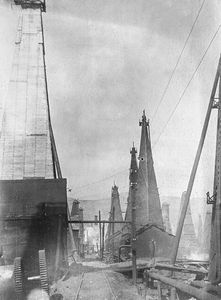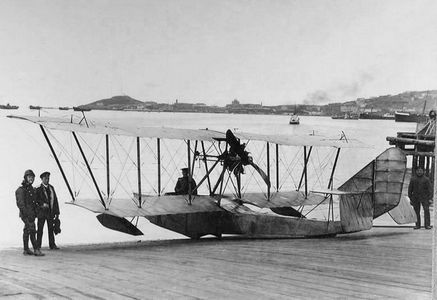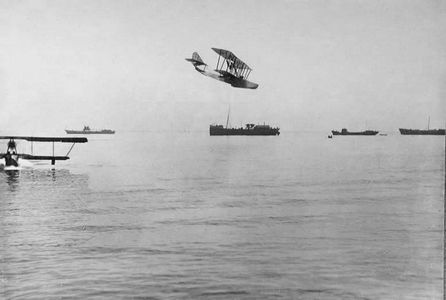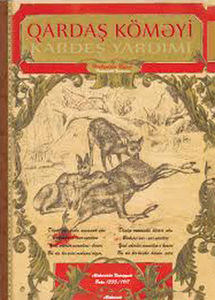The economy of Azerbaijan in 1914-1917
Despite the fact, that territory of Northern Azerbaijan was not involved in direct combat operations, the war caused massive damage to the country.
The war aggravated situation in the oil industry, fundamental component of Azerbaijan economy. If at the beginning of the war in Azerbaijan was produced 431 million poods of oil per year [Note: pood is a Russian unit of weight equivalent to about 36.11 pounds], but in 1917 this rate was reduced to 402 million poods. Railway and sea transport carried military freight which caused difficulties to supply of the civilian population. Lack of transportation hampered raw materials supplying.
Copper smelting industry, silk-throwing factories curtailed the production. H.Z. Taghiyev’s textile factory, which was the largest in the Caucasus switched over to the military goods output (coarse calico, bandage and cotton wool) as a result of raw material shortage cut down its production.
Noteworthy, agriculture began to stagnate, the taxes had been increased by 50 percent, for the front needs horses and bulls were requisitioned, and since 1916 was launched the mobilization of young men from the non-Russian population at the age of 18-23 years for rear works.
For the first few months of the war had been formed shortage of industrial goods and agricultural products. The country entered a period of inflation and deficits. In this situation, the government didn’t take any measures to struggle against inflation either to freeze prices or the implementation of the card system. Food crisis began in the country in 1916 Prices for food and living essentials increased by 300-500 percent.
In Baku, including other cities were housed large military units, and opened military hospitals, due to that factor the population was considerably increased.
As a result of military operations in the territory of Turkey, first Muslim refugees, and then thousands of Armenian refugees poured into the territory of Erevan, Yelizavetpol and Baku guberniya (provinces).
In the absence of sequencing of economic policy, the mobilization for rear work caused political vacuum formation, and afterwards, discontent with government policies. Since middle 1915, in the country began period of workers' strikes and demonstrations, in autumn- numerous peasant uprisings.
On January 9, 1917 were strikes in major industrial cities of Russia, including Baku. On January 19, city workers of 57 enterprises stopped working. Since January 25, the strike movement had alredy affected 22,000 workers at 87 enterprises.
Reaction of the population on impressments of Azerbaijanis for rear works
As a result of ignorance and indifference of the military authorities in the national issue became more apparent in the summer of 1916 This was demonstrated by the government's attempt to mobilize the youth from the non- Russian at the age of 18- 23 years for the rear works
That edict put an end to traditional forms of relations of non- Russians of the empire with the Russian Army: previously only volunteers entered military units, and the rest of them had to pay conscription of wealth.
Number of voluntary regiments became considerable: so, in the Crimean War of 1853-1856 4 Muslim cavalry regiment and 4 horse brigades, were directly involved in the fighting composed entirely of Azerbaijanis, directly participated in battles, as well as troops of frontier guards, gendarmerie. Conscription was considerably increased as well in hard period for Empire and people’s attitude towards it was tolerant. Before, involvement Muslims from the Caucasus in the fieldwork was strictly forbidden, as forced impressments for fieldwork knowingly put the them in a disparaging position in comparison with front-line soldiers.
Poorly thought-out decree of 1916 was firstly implemented in Turkestan, and this immediately leading to clashes among local population and Russian authorities, and afterwards led to the uprisings. Governor in the Caucasus and Commander of the Caucasian Front, Grand Duke Nikolai Nikolaevich Romanov August on August 9, 1916, sent letter to the tsar, in which he had warned him about “extremely dangerous situation for government’s interests” in the Caucasus and it reached a crisis point: “ Forced involvement of Caucasian Muslims for the work in the fields is equivalent disparaging attitude toward them in the eyes of many Muslims humiliating their dignity”. A special meeting of governors and provincial leaders said the mildest form of protest would be the mass exodus of men to the mountains, and then came the conclusion that there will be an increase in armed uprisings and attacks on the Russian administration, railways and oil fields would be destroyed.
However, as a result of the foresight of Nikolai Nikolayevich, who by his authority allowed local officials not to implement the decision, bloodshed in the Caucasus was prevented.
Specially convened meeting of the governors and chiefs voted unanimously areas that the mildest form of protest would be massive desertion the mountains, and the armed insurgencies.
Baku Naval Aviation School
The opening ceremonies for the first Military College of Azerbaijan - Baku department of Naval Aviation Officers’ School took place on November 22, 1915, with participation of more than 500 outstanding public figures.
On February 26, 1916 the school received the autonomous status of Baku Naval Aviation School.
Baku Administrative Board covered all construction expenses for landing piers, special descents for hydroplanes, hangars including other constructions.
Chief of Administrative Board Mammad Hasan Hajinski - a graduate of Petersburg Technological Institute, made a major contribution to set up schools.
November 1915- November 1917, 40 officers and 17 lower ranks were trained at school, as well as there were graduated 20 naval aviators and one lower rank. Average number of airplane docks comprised by 20-25 units.
Besides training of naval aviation staff, at school the first time were put to the test hydroplanes M-9, M-7 of D.P. Grigorovich, aeroglider of I.I. Golenishev- Kutuzov, M-10 of A.N.Sedelnikov, M-15, boating bomber of E.R. Engels.
In July, 1918 Baku Naval Aviation School was closed down by Baku Soviet Bolsheviks.
Resettlement of refugees in Azerbaijan
In early February 1915, a revolt against actions of the Russian authority broke out in Adjara. In suppressing the rebellion in the region of Batum were killed about 45 thousand people and thousands fled the country. From 1 April to September 1915, in the Central Caucasus was registered 74, 990 Muslim refugees. In the Caucasus, for refugees’ assistance acted Chief Commissioner of Refugee Rescue of the Caucasian Front, General Tamamshev of Armenian origin, and his under the leadership functioned organizations such as the Baku citywide commission for Refugee Rescue at the Committee of the All-Russian Union of Cities, the Caucasian Refugee Rescue Committee. However, as it became clear, they had been created aiming to settle refugees’ affair - Christians, so as “ people who had been expelled from the area of military operations under the control of the police, were not included in category of refugees”.
As a result, assistance to Muslim refugees was rendered by Baku Muslim Charitable Society headed by Azerbaijani philanthropist H.Z. Taghiyev and Sh. Asadullayev. On the account, the society rescued from inevitable death 12 thousand of orphans-children. During attack of the Russian Army in Turkey refugees adjars (about 130 thousand people) were resettled in the occupied territory by Russians troops in valley of Alashkert without means of subsistence.
In November 1914, emperor Nikolai II received Armenian delegation headed by catholicos George V, and declared that “Armenian issue will be solved according to Armenian’s expectation with the end of war, during negotiations on peace” and allowed formation of Armenian armed groups for with Russian Army in the territory of Turkey.
During Russian Army marching out Armenian armed groups committed massacre against Muslim population. Meanwhile, behind the front, Armenians, residents of Turkey broke out a revolt, declared on creation of so called “State of Van” and committed genocide against Turkish. First time about armenian atrocity informed at the meeting of Muslim from Elizavetpol (Ganja) Khalil Bey Khasmammadov. In Azerbaijan cities were resettled Turkish refugees: at that time in Elizavetpol were resettled 160 Turkish refugees from Erzrum. As the government’s organizations didn’t render them assistance, charitable philanthropists did everything in their power to render assistance for Muslim refugees.
As the result of retreat of the Russian Army from Asia Minor Armenians refugees also arrived in Azerbaijan. If Adjars and Turkish refugees were forbidden to settle in Baku, and quite the contrary to that fact Armenians had been intentionally settled in Baku and in other large cities.
Together with Armenian charitable organizations, government’s committees rendered assistance to Armenian refugees as well as committees of countries- members of the Entente. So, in December, 1915 in Baku were resettled 2, 412 Armenian refugees, who received from General Tamamshev 18 340 rubles, and a month later extra 46 452 rubles. A well-known entrepreneur Rockfeller only in 1916 rendered assistance to armenian in the amount of 200 thousand dollars, committee “France-Armenia” assured the cathalicos of all Armenian George V “ in their loyalty to the affair of unfortunate and noble Armenian nation” and provided financial support. And soon after these armenian refugees continued arriving to Azerbaijan.
Obviously, in 1914-1917 the activity of state structure, established on the base of order on “Providing needs of refugees”, was subordinated to colonial policy of the Russian empire, and their aim was trusteeship of Christian elements – the Armenians. Armenians were supported as well by different representatives and western social-political organizations.
Azerbaijan charitable organization took the mission to render assistance for Muslims refugees.
Resettlement of refugees in Azerbaijan impacted on demographic situation and worsen food crisis.
